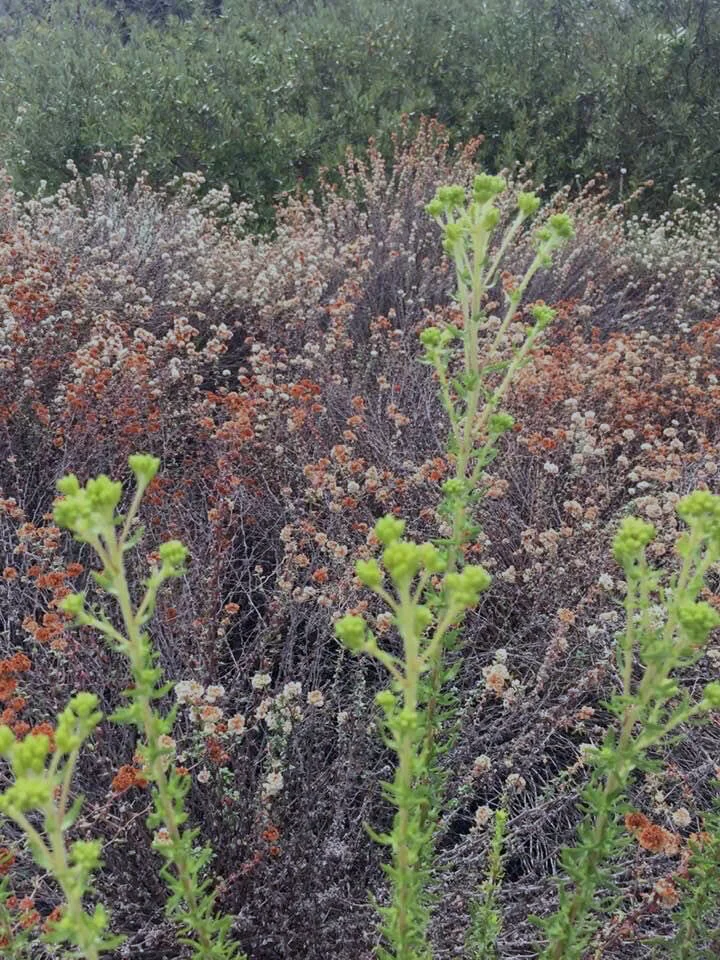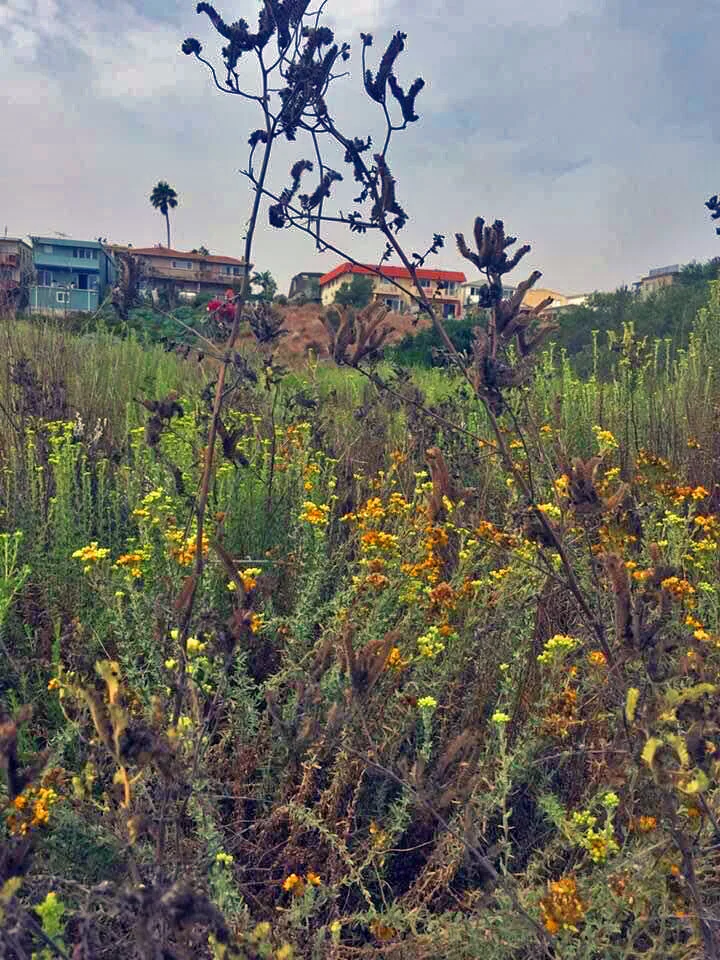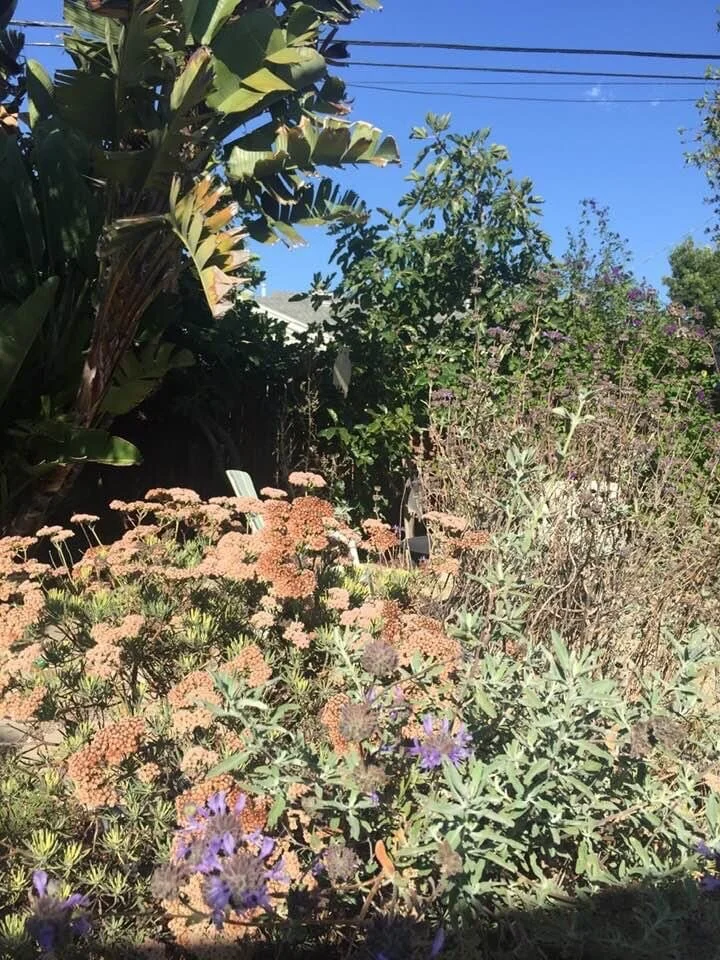Goldenbush about to burst into bloom
By Cindy Hardin, Director of Outdoor Education
The year 2020 has been rife with events unlike any that we have ever seen. Our way of life from a mere six months ago has changed in many new and challenging ways. Lots of new nomenclature is also popping up in the language that we use: compliance, non-compliance, rate per 100,000, unprecedented, synchronous, asynchronous, pandemic — the list goes on and on.
One word that is being used with frequency is “pivot”. In past times, I would hear this word while viewing a basketball game, as in “great pivot shot”. To pivot is to change direction quickly, be it in the physical or mental sense. And since March, people have pivoted to an entirely new approach to work, shopping, social interaction, education-pretty much all that we do in our day to day existence.
It is amazing how quickly new information works to change one’s mindset and reactions. I am quite an extrovert, and getting together with a good-sized group and sharing food and laughter has always been a favorite pastime. But now, if I see any footage of large crowds gathering (I am looking at you, Sturgis, South Dakota!), I actually cringe in horror. In five short months many things that brought great joy to all of us are now at least temporarily out of reach. My perspective has changed profoundly in approach to social life. I suppose you could say I have pivoted to a more solitary existence. But I never feel a lack of company when in nature-and that is where I have been spending much of my time.
There is consistency to be found in the natural world. This steadiness can be quite comforting in this unsteady period. By the time this article is printed, we will be in the waning days of summer, with fall on the horizon. Already migratory birds are returning for their winter stay in our region. The Kingfisher and Loggerhead Shrike have returned to the Ballona Wetlands for the season, and shorebirds are plumbing the sand and mudflats for an invertebrate snack after exhausting their reserves during their journeys south. Meanwhile, several species of swallows are busily feasting on the insects that are abundant this time of year, fueling themselves for their trip to the warmer climes of Mexico and beyond. Seasonal changes continue, and are absolutely predictable.
The vegetation at Ballona is changing too. Those plants that bloom after winter rains, like Bush Sunflower and Dune Lupine, have long dropped their blossoms and most of their leaves. This behavior, called Summer Dormancy, is an adaptation that allows native plants to survive in our Mediterranean Climate, one that is characterized by cool wet winters and long dry summers. But the Dune Buckwheat still has a fair amount of blossoms, and the champion late summer bloomers like Coast Goldenbush and Slender Aster are about to burst into a profusion of yellow and pale lavender.
A bee’s breakfast from an August blooming Slender Aster.
This is known as secessional blooming, and is a hallmark of a truly biodiverse habitat. As one species stops blooming, another will start to flower, and if the proper palette of plants is in place, there will be some type of fodder in the form of nectar available for our precious pollinators all year long. Not only do these pollinators provide the fertilization that allows a plant to produce seed; they also play a key role in the food web. Lizards are insectivores, along with some of our most beautiful birds, like the above-mentioned swallows. Snakes eat lizards, and that snake might go on to become dinner for a Red Tail Hawk. And the Cooper’s Hawk is always on the lookout for a wayward smaller bird for a meal.
A constant yet ever changing food source means more animals and a healthier ecosystem. Unfortunately, the majority of habitat for animals in our big city has either been lost of severely fragmented. Some forward-thinking citizens have been successful in creating habitat in their own back yard. And how did they accomplish this amazing win for animals and nature? They planted native plants!
Neighborhood Native Plant front yard-lush, green and in bloom in late August.
We at Los Angeles Audubon are huge proponents of replacing water guzzling lawns and introduced plants with California natives. But a frequent argument is that these gardens “look dead” during part of the year, or appear “weedy”, which discourages some people from embracing natives.
And this is where a change of perspective, or pivot, is important. A plant that is in summer dormancy, like the Bush Sunflower, actually provides a huge amount of seeds for the California Towhee and the soon to return White Crowned Sparrows, who are famished from their long migratory trip. Those dried up plants are not dead-they are a seed bank for next year. And with the strategy of using plants that bloom at different times of year, or secessional planting, there is no reason to not have some things in flower in a native garden all year round.
The Buckwheat says goodbye and the Goldenbush says hello!
The coming fall season is the perfect time to plant natives. Although some watering is required upon the initial installation, the rains of late autumn and winter will allow the new plants to establish themselves and thrive. Many environmental groups hold native plant sales during late September and October. Often there are native plant enthusiasts on site at the sales to advise novices on what plants would do best in the particular conditions of your area. And careful planning will produce a garden that has some flowering year-round.
As the Branching Phacelia sets its seeds, the Goldenbush steps in to feed the insects.
A switch to native plants is a beautiful pivot, that will bring more life and energy to your yard, while saving you money on your water bills. Due to the current situation, many of us are spending more time at home. With a biodiverse, native habitat in place, a veritable nature show will be on view from your window-no need to turn on the computer. This could be one of the most satisfying and rewarding pivots of 2020, and LA Audubon encourages everyone to take a chance and make a change in your landscape, and your perspective on what makes a beautiful garden. We even have an on-line resource for you to use: the “Kill Your Lawn” comic book! This very popular booklet was created by High School students that were part of our Greenhouse Program. It includes lots of ideas and techniques that can be used to create a wildlife friendly, Southern California sustainable garden. And if you do choose to take this step, we would love to see the changes that are being made to your patch. Your documentation could be a part of our newsletter! We hope to hear from you.
Published by Los Angeles Audubon Society, Western Tanager, Sep-Oct 2020, Vol. 87 No. 1.






